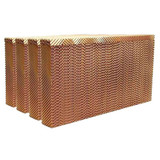What pump type do you need for solar hot water collectors?

plumbonline’s tech tips are here to help answer some of the harder plumbing questions, one question we are asked frequently is, “how do I size a circulation pump for my solar hot water system?” In order to answer that tricky question we have grilled our resident pump expert and renowned hydraulic design coordinator, Nigel Viola. Nigel heads up G2 TECH’s design team. (g2tech.net.au) The pump guru has more than 15 years industry experience and excels in solar and hydraulic design in conjunction with other services.
Sizing a Circulation Pump for solar hot water
Essentially there are only four types of domestic solar systems that require a solar circulation pump:
- Pressurised, open loop systems. This is where the potable water is drawn from the mains pressure cylinder (a cylinder connected directly to the mains cold water supply), passed across the solar collectors and returned to the cylinder.
- Open vented, open loop systems. This is where an open vented, low pressure cylinder without an attached header tank and a pressure rating of typically 7-meters head, cannot be placed above the collectors to take advantage of thermosiphon. Potable water is drawn from the cylinder, passed across the solar collectors and returned to the cylinder. For these installations the header/make-up tank is placed slightly higher than the top of the collectors.
- Pressurised closed loop systems. More common with flat-plate collectors, these systems use a heat exchange coil in the mains pressure cylinder and typically utilise a heating medium like propylene-glycol to provide freeze protection. These systems are also typically fitted with closed-circuit expansion and most likely an automatic filling system to make-up any primary heating fluid loss.
- Open vented, closed loop systems. The same principle as above but typically used when the hot water cylinder cannot be placed above the collectors to take advantage of thermosiphon, has a header tank attached or height/plumbing restrictions do not allow for the header tank to be placed above the solar collectors.
In all of the above systems the primary solar fluid (that is the fluid, water or propylene-glycol etc., that passes from the cylinder to the collectors and back), is in balance i.e. Water is self-levelling. For example, if you were to fill a flexible tube with water and hold it in a U-shape, the water level on both sides of the tube will be the same. This means the pump does not have to lift or displace water in a solar system, it only needs to circulate it. Put simply, if you can imagine a circular tube (hoop) filled with water; the pump required to push that water around the tube will be exactly the same regardless of the hoop laying horizontally or standing vertically.
All of this means that the ‘head’ (ability for the pump to create pressure) required by a solar pump is pretty small. The pump only has to overcome the frictional losses created by moving the water around the loop regardless of the collectors being immediately above the cylinder to being three-storeys higher. A pump that has a head of 20kPa or approximately 2-meters will in most cases be more than enough.
Selection of the solar hot water pump
So; to select a solar pump, as a rule-of-thumb we look at three things:
- Temperature rating of the pump. 90OC should be enough if the pump is placed correctly on the flow from the cylinder i.e. it sucks from the cylinder and pushes through the collectors.
- Head. We are looking for a pump with no more than 3-meters head. A pump with too much head pressure will cause problems.
- Flow.
So how do we establish flow?
All collectors will have a nominal flow rate although most will not show it. These will vary but as a guide, if we use 3-litres per minute per flat plate collector and 1-litre per minute for every 10-evacuated tubes we will be pretty close.
Example 1
- A house with two off 2 square meter, flat plate collectors. We need a flow rate of 6-litres per minute (0.36m3/hr) at max. 2-meters head.
Pump selections Example 1
- Grundfos 15-20CIL2 on speed 1, 2 or 3 depending on actual head losses.
- Grundfos UPS20-60N on speed 1.
Example 2
- A house with one off 30-evacuated tube solar collector. We need a flow rate of 3-litres per minute (0.18m3/hr) at max. 2-meters head.
Pump selections Example 2
- Grundfos 15-20CIL2 on speed 1, 2 or 3 depending on actual head losses.
Recent Posts
-
Buyers Guide - How to choose a Central / Ducted Vacuum
The terms ‘central vacuum’ and ‘ducted vacuum’ both refer to the same thing, a vacuum system that i …10th Nov 2022 -
Replacement Parts for your Carrier Gas Ducted Heaters 58 PIN | 58 PON
Parts for the Carrier 58 PIN & 58 PON Gas Ducted Heaters plumbonline offer a range of Carrier replac …21st Jul 2022 -
Evaporative Cooler Airconditioning CELdek Pads 5090 Series
Evaporative Cooler Airconditioning CELdek Pads 5090 SeriesCELdek® 5090 evaporative cooling pad is us …2nd Jun 2021


